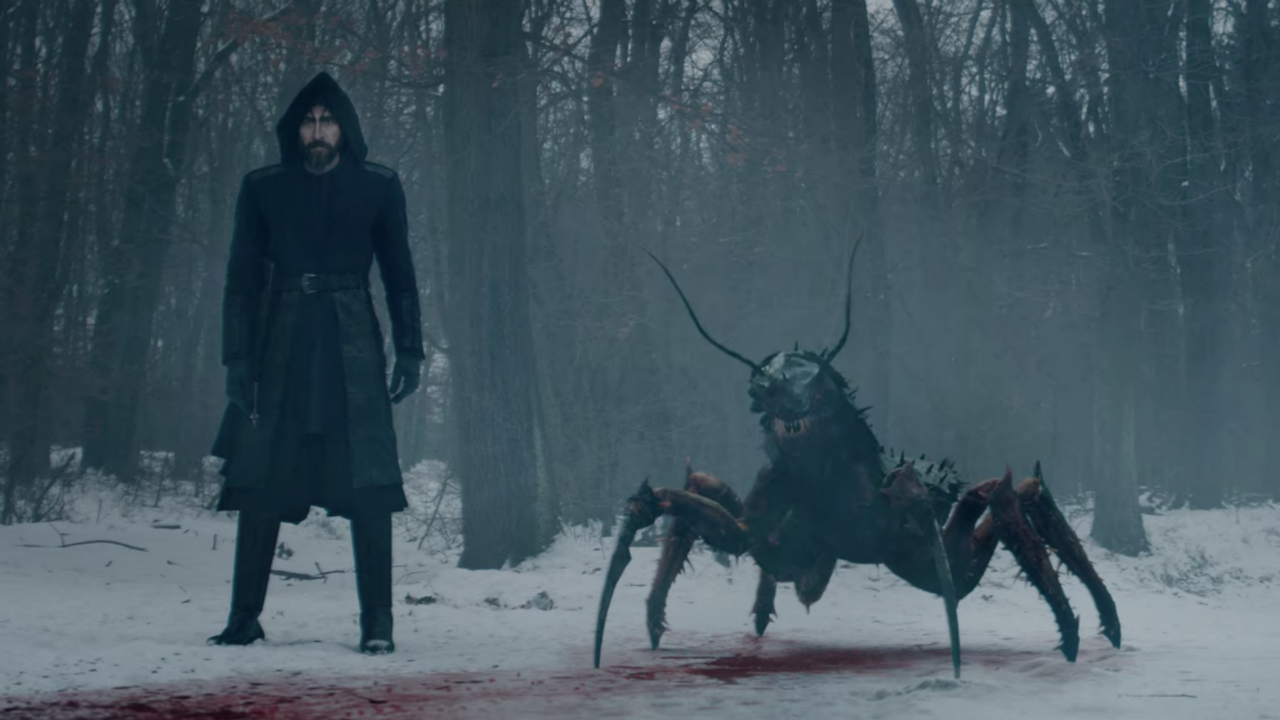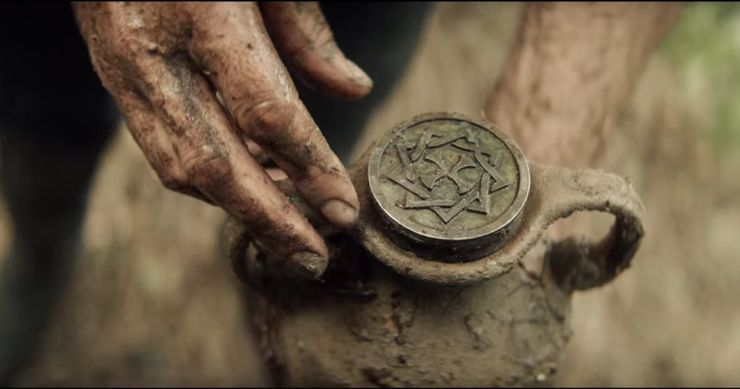We can't seem to get enough of all things The Witcher, right? Well OK, maybe I'm mostly speaking for myself here due to my slight big obsession with not only the game but also the books and the TV adaptation. It appears that the biggest streaming giant in the world Netflix may also share my enthusiasm for the mutated monster-
In this mini-documentary, Netflix takes us on a journey through The Witcher's giant bestiary — from their mythological origins to their (many, horrifying) ways of killing Geralt. The beating heart of The Witcher TV show is in its monsters and its lore. We start off by exploring the very first beast that is shown in the opening scene of Netflix's The Witcher and that's the Kikimora. Originating from Slavic folklore, the Kikimora also known as sziszimora or szyszymora is a female spirit said to grow from a dead fetus or stillborn baby. At times, the spirit could come from the body of a woman who died during childbirth and takes on the face of the dead woman or her mother, grandmother, etc. In some timid explanations of the Kikimora, she is said to come into homes and clean up - maybe not a bad thing to have around the house then?
As stated in the documentary, there has always been animal hybrids throughout mythological history, even going back as far as the Egyptians. Our first encounter of these creatures in The Witcher is Sylvans - which resemble fauns, woodland type goats. It then goes into detail about The Pig-Faced Lady of Europe and the legend behind it. Apparently, the myth goes that the Pig-Faced Lady got her oinker appearance due to the result of witchcraft because a beggar put a curse on the pregnant woman and the unborn child would come out with a pig face. Following her wedding day, the pig-faced woman's new husband was granted the choice of having her appear beautiful to him but pig-like to others, or pig-like to him and beautiful to others. When her husband told her that the choice was hers, the enchantment was broken and her pig-like appearance vanished. Throughout England, the myth was that a pig-faced woman allegedly had her portraits published which can still be viewed today. They were also cruelly shown off at fairs by showmen, but later many said that they were actually shaven bears dressed in women's clothing and not, in fact, a real Pig-Faced Lady. Imagine that?
If you were paying attention to Netflix's The Witcher, you certainly wouldn't have missed the Striga or Strzyga in Polish. The Striga is a vampire-like woman that hangs around graveyards and the myth is that at night, she turns into a formidable creature with huge rows of teeth and long talons that rips apart flesh and peels back the skin of humans and also animals. As the main Striga we know of, Princess Adda, fell to the curse when she and her mother died during childbirth and according to Geralt as he takes on the task of killing one, it has a disproportionately large head on a short neck and a “tangled, curly halo of reddish hair.” A Striga is said to transform into these beasts only with people who were born with two hearts and two souls, and two sets of teeth (the second one barely visible) and when they die, their second self takes over into this horrific creature.
Although we didn't actually witness the next monster on the list, a Selkie Maw, in The Witcher TV Show, we did see Geralt walking into the tavern with Selkie Maw guts covering him from head to toe. The legend behind the Selkie Maw or the Selkies comes from Scottish and Celtic mythology and are stories about seal people, also called selkies, silkies, selchies, or roane. Legend has it that they can transform from one creature to another by shedding their sealskin, and alternatively, putting it on again. Selkies were also known to be very beautiful and docile so this doesn't really add up with how the Selkie is presented in The Witcher. Of course, it wouldn't have made for much of a monster then, would it?
If you have Entomophobia, you may want to skip this part of the documentary as it does show some images of creepy, crawly beasts particularly the Roachhound. In The Witcher show, we see this agile creature chasing after Yennefer, the spoiled queen named Kalis and the queens baby girl. Due to her husband wanting a boy, he hires an assassin to track them both down and kill them. Helping the assassin is a Roachhound or otherwise known as a Krallach. Although it doesn't go into too many details on this monster's background other than the different variations of it around the world, the Krallach is used by rogue mages that have a segmented body with many limbs to help it move. With tiny hairs covering its body that are sensitive to sound and touch, it can detect and kill its victim in moments.
The tale of the Doppelganger is a strange and old fable. In Egyptian mythology, a ka as it was known was a tangible "spirit double" having the same memories and feelings as the person to whom the counterpart belongs. Some accounts of Doppelganger called the ‘evil twin’ suggests that they might attempt to provide advice to the person they shadow, but that this advice can be misleading or malicious. They may also attempt to plant sinister ideas in their victim’s mind or cause them confusion. For this reason, people were advised to avoid communicating with their own Doppelganger at all costs. In The Witcher, we see Mousesack, a druid and a friend to Queen Calanthe of Cintra brought before Cahir as he sets a shapeshifter onto Mousesack who then takes on his appearance to go find Ciri under the cloak of a false identity.
Finally, we undercover the Djinn in the mini-documentary. Far from your friendly and warm genie from Alladin, the Djinn comes from Arabic mythology and can take on human-like features, feelings and even be mistaken for a real person. Also like humans, they can either be evil or good but a good rule of thumb is to be wary, for even a friendly Djinn is unpredictable. If an agreement is broken with a Djinn, the person will most certainly live to regret it. There are five different types of Djinn: Jann is the least powerful, Djinn, Shaytans or devils, Ifrits (also Afrit For Efreet) and Marids are the most powerful. As we see in The Witcher, Geralt and his bard companion Jaskier discover a genie's jar which in turn throws both their lives into a life-threatening endeavor and it is only repressed when Geralt comes in contact with Yennefer's desire and by Geralt's third and final secret wish.
For something to look forward to while we await the second season, Netflix announced a few of the new faces that will be joining the cast of The Witcher. The seven new cast members to join the series is Yasen Atour as Coen, Agnes Bjorn as Vereena, Paul Bullion as Lambert, Kristofer Hivju as Nivellen, Thue Ersted Rasmussen as Eskel, Aisha Fabienne Ross as Lydia and Mecia Simson as Francesca. For those of you who love Killing Eve, you’ll notice a familiar face in the next season. Kim Bodnia, who plays the role of Konstantin in the spy-action thriller, will play Geralt’s father figure and the oldest Witcher on the continent, Vesemir.
If Vesemir happens to be your favorite character, you’re in luck as Netflix is giving the most experienced Witcher his own animated show. Though The Witcher is well known from CD Projekt RED’s video game trilogy, the Netflix series is based on the eight-book saga of Polish author Andrzej Sapkowski. There is a wealth of material within Sapkowski’s novels and short stories, but Nightmare of the Wolf will not adapt any of them. Instead, Netflix is looking to tell an entirely new story about the beloved character who will be introduced in the show’s upcoming second season.
Be sure to check out our own review for the Netflix series The Witcher here. If gaming is more your style, The Witcher 3: Wild Hunt is available now on PS4, Xbox One, Nintendo Switch, and PC.



